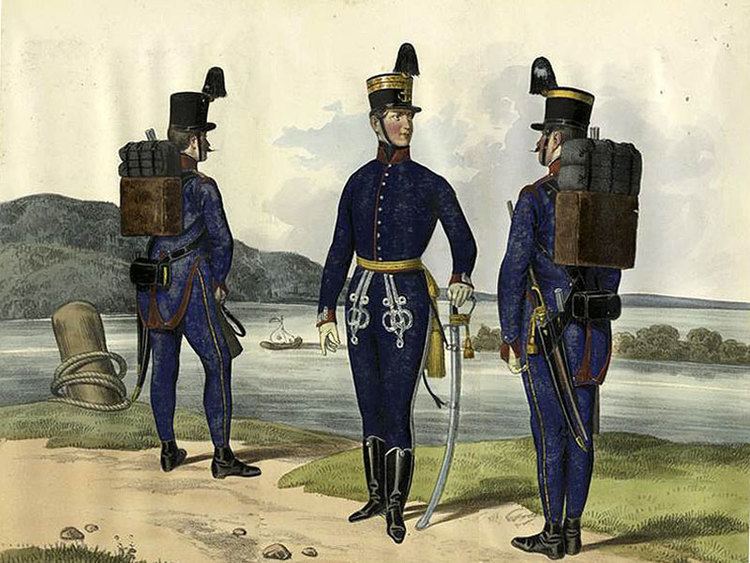Active 1475–1804 Colors Blue | Branch River Flottila | |
 | ||
Tvr ava ajka i miroslav farka petrovaradinsk tvr ava novi sad
šajkaši (In Serbian, Serbian Cyrillic: шајкаши, German: Tschaikisten) refers to the river flotilla troops guarding the Danube and Sava, and especially, the Port of Belgrade, against the Ottoman Empire from the 16th to the 19th century. During that period, the rivers were natural borders of the Kingdom of Hungary and Habsburg Monarchy with the Ottoman Empire, part of the Military Frontier. The troops were composed out of ethnic Serbs, who had special military status. Their name derives from the small wooden boat known as chaika (šajka, tschaiken), a type of galley.
Contents
- Tvr ava ajka i miroslav farka petrovaradinsk tvr ava novi sad
- ajka i maksim mudrini gajda by slavu ka
- Personal armament
- Warship armament
- Clothing
- Ranks
- 16th century
- ajkai Battalion
- ajkai migrations
- Legacy
- Notable people
- Annotations
- References
ajka i maksim mudrini gajda by slavu ka
Personal armament
The Šajkaši were armed with sabres, spears and ordinary and mechanical arrows. Sometimes they wore helmets and shields. Their spears likely were longer than ordinary, set to be used at longer distances. They used arrows until the end of the 16th century when the arquebus had been perfected. Later, when gunpowder began to be widely used, the Šajkaši were armed with sabres, long spears and muskets.
Warship armament
In 1475, King Matthias had in his Danube Flotilla around 330 chaika with 10,000 men, among which were 1,700 lancers, 1,200 men-at-arms, while "the rest were catapultists and crossbowers". In the Belgrade port, 34 chaika with 18 oars, 18 soldiers and a catapult at the front were stationed. Larger chaika, of which there were 16, had 24 oars and 300-man-crew, 4 large guns at the front, "from which 100-pounds of weight of shots, 100 carbott or pisside (types of shells), and 200 hand-guns, were shot". Apart from the ordinary chaika, there were larger ones, called "galleys".
Clothing
Their clothing was in dark-blue colour.
Ranks
16th century
Pavle Bakić commanded the Šajkaši in the service of Ferdinand, the Archduke of Austria and King of Hungary and Croatia. The Šajkaši participated in the Battle of Mohács (1526). After the battle the Šajkaši were still unpaid for their services. Ferdinand reprimanded the court for not having paid at least part of the unpaid salary to the Šajkaši. Bakić once again turned to Ferdinand, alerting him that the nonpayment to the Šajkaši would cause estrangement of the Serbs in his lands, and those of Zapolya and the Ottoman Empire. He also informed Ferdinand of the persecution of Serbs by the Austrian staff and officers.
Šajkaši Battalion
The Frontier Šajkaši Battalion (Krajiški šajkaški bataljon), known in German as Czaikisten-Bataillon, was active in the period of 1763–1873. After the Treaty of Belgrade (1739) the Habsburg-Ottoman border was set up at on the Danube and Sava rivers. The Šajkaši bands in Komarno, Esztergom, Györ and other places were abolished, until the establishment of the Šajkaši Battalion in Bačka, between the Danube and Tisa, in 1763 upon decision of the Habsburg War Council. The Serb colonising community which was employed into the battalion (the šajkaši) was given the Šajkaška region, which initially included six villages, eventually increased by eight. The battalion headquarters were in Titel. The battalion had four bands in 1769, with ca. 1,116 men, although it was constantly expanded.
Šajkaši migrations
Šajkaši families, Serbs, settled in Esztergom during the rule of Matthias Corvinus, a settlement in the lower town developed from the community, called Srpska varoš.
A group of Serbian Šajkaši settled in Slovakia, where they continued their service, known in Slovak as čajkári.
Legacy
In Hungarian war annals the most clear and also most vulnerable place is taken by the King's Šajkaši. They were the most important factors and participants of the victories of the Royal Army. Whenever there was a threat to Hungary, the Šajkaši were the main support of the territorial defence and the most reliable aid to the Royal Army.
Stationed at many locations, the most important Šajkaši units were those of Komárom, as this was the most important Imperial fortress in Hungary; they were stationed here up until the reign of Maria Theresa, when they were moved to South Bačka.
The šajkača hat is derived from the 18th-century Šajkaši in Banat.
Notable people
Annotations
Another term used in German was Nassadisten (Serbian: насадисте/nasadiste).
